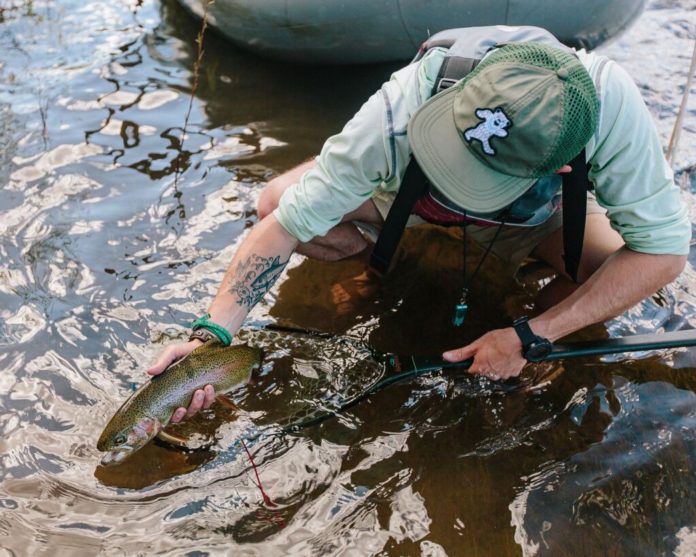I get a little excited when the spring temperatures bring about an emergence of mayflies that haven’t been seen since last fall.
The air feels good on your skin. Midges are skating across the surface and gathering up along rock edges and soft pockets. But if you look closely enough you’ll see the slow rise and long tail of blue wing olive mayflies lifting through the air.
Blue Wing Olives, aka BWO, are small mayflies with a short life cycle that is completed in 14-16 weeks. From egg to nymph, emerger to dun and the final stage, spinners, trout target BWOs in all stages. BWOs spend the majority of their life cycle in the nymph stage. Mature nymphs belong to the swimmers family of mayflies.
The nymphs will actively move throughout the mid-water column swimming towards the surface, providing easy targets for swift moving trout. In the emerger stage, trout will target the transitioning nymphs just below the water surface.
Duns, the adult stage, float for long distances with erect wings, the classic “sailboat” appearance. The adult duns will molt on streamside vegetation and become spinners. Spinners mate, die and fall upon the water forming spentwing spinners.
Selective trout will sip spentwings in the evenings. Female spinners returning to the water to lay eggs become another target for feeding trout.
All across the Rockies in Montana, Wyoming, Colorado, Utah, New Mexico and other states Blue Wing Olives are one of the most prevalent hatches of the year. In spring, the emergences can blanket eddies with insects. Rivers like the Green, North Platte and Bighorn hold storied tales of angling with BWOs and deservedly so.
The local scene
Locally, the Eagle River has been producing healthy hatches of blue wing olives. And the resulting fly fishing has been a welcomed change with high numbers of trout targeting the surface and dry flies. A clean drift enhances the chances for anglers to score.
Small dry flies can get away with a minute amount of drag like a skating midge. But tiny dry flies will drown and require repeated dry fly dressing or shake to keep them on the surface.
Flies to target the nymph stage would be the common pheasant tail nymph in size Nos. 16-18. Other small, micro-mayfly nymphs in olive work well too. Fish these nymphs close to the river bottom for optimal success.
Emergers are active bugs swimming through the mid-column of the river in an attempt to reach the surface. Size 18 soft hackle pheasant tails and RS2s work the same zone effectively targeting active trout. Give these nymphs a chance to rise at the end of the drift and pause for a moment before casting.
Duns are best imitated by the great parachute adams. Small catskill style dry flies can work for picky trout but a parachute adams in size 18 always delivers action. The upright nature of the BWO in the dun stage makes any parachute dry fly a good choice.
Spinners have wings that lay out to the side like a dragonfly. Females depositing eggs after mating will cling to rocks and vegetation and crawl underwater to lay their eggs. Currents wash females into the river regularly. And the males die soon after mating. Falling upon the water in easy to recognize “spentwing” patterns, like little airplanes floating on the surface. BWO spentwings are great evening patterns. A slightly larger spentwing dry in sizes 12-16 will draw the attention of hungry trout with ease.
Blue Wing Olives, a mayfly with multiple hatches throughout the year. And the Spring dry fly opportunity cabin fever anglers across the Rockies have awaited all Winter. With massive springtime emergences and a presence in any watershed where fly anglers dip their dry flies, Blue wing olives aka the BWO represent the most prevalent mayfly around.
Michael Salomone moved to the Eagle River valley in 1992. He began guiding fly-fishing professionally in 2002. His freelance writing has been published in numerous magazines and websites including; Southwest Fly Fishing, Fly Rod & Reel, Eastern Fly Fishing, On the Fly mag, FlyLords, the Pointing Dog Journal, Upland Almanac, the Echo website, Vail Valley Anglers and more. He lives on the bank of the Eagle River with his wife, Lori; two daughters, Emily and Ella; and a brace of yellow labrador retrievers..
Credit: Source link































